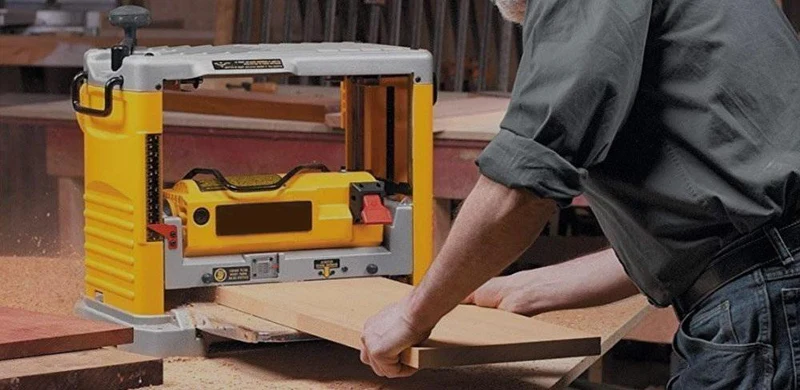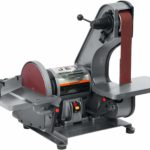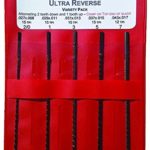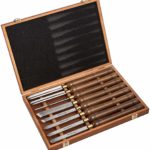A bench planer and a sander are essential tools in woodworking, each serving distinct purposes that cater to different tasks. A bench planer, also known as a thickness planer, is designed to create uniform thickness across the length of a wooden board. It operates by feeding the wood through rotating blades that shave off layers, producing a smooth, even surface.
The history of the bench planer dates back to the early 19th century when manual planers were commonplace. Over time, advancements have led to the development of electric bench planers, increasing efficiency and precision in woodworking.
On the other hand, a sander is a versatile tool used to smooth surfaces by abrasion with sandpaper. Sanders come in various types, including belt sanders, orbital sanders, and palm sanders, each tailored for specific tasks.
The evolution of sanders can be traced back to the late 19th century, with the advent of powered sanders revolutionizing the way surfaces were finished. Today, sanders are indispensable in tasks ranging from rough shaping to fine finishing, making them a staple in both amateur and professional woodworking.
The primary distinction between a bench planer and a sander lies in their functions. A bench planer is ideal for dimensioning wood, ensuring consistent thickness and removing significant material quickly. It is commonly used for preparing raw lumber, creating flat surfaces, and achieving precise thickness specifications.
Conversely, a sander excels in surface finishing, removing minor imperfections, and preparing surfaces for painting or staining. Its versatility allows it to be used on various materials, including wood, metal, and plastic.
Understanding these fundamental differences is crucial for making an informed decision on which tool to use. While both tools are invaluable in their own right, their specific applications and operational mechanisms set them apart, catering to different aspects of woodworking projects.
Advantages and Disadvantages of Bench Planers
Bench planers are invaluable tools in woodworking, offering numerous benefits that enhance efficiency and precision. One of the primary advantages of using a bench planer is its ability to achieve consistent thickness across wooden boards. This tool excels in producing smooth, even surfaces, which is crucial for creating high-quality furniture and cabinetry.
The precision offered by a bench planer ensures that each piece of wood is uniformly shaped, significantly reducing the need for extensive sanding and manual adjustments.
Another notable benefit is the time-saving aspect. Bench planers can quickly remove large amounts of material, streamlining the preparation process for woodworking projects. This efficiency is particularly advantageous in professional settings where time is of the essence.
Additionally, bench planers are known for their accuracy, making them ideal for tasks that require exact measurements and flawless finishes. According to woodworking expert John Smith, “A bench planer is indispensable for achieving the level of precision needed in fine woodworking. It saves time and ensures that each piece meets the desired specifications.”
However, there are also some drawbacks to consider. One of the main disadvantages is the initial cost. Bench planers can be a significant investment, which may not be justifiable for hobbyists or those with limited budgets. Furthermore, there is a learning curve associated with using a bench planer effectively.
Beginners may find it challenging to master the tool, potentially leading to mistakes and material wastage. Additionally, bench planers have limitations on the types of wood they can handle. Certain hardwoods may be too tough for some models, requiring more powerful and expensive equipment.
User testimonials highlight these aspects, with some praising the efficiency and precision of bench planers, while others caution about the costs and learning challenges. Jane Doe, a seasoned woodworker, shares, “Investing in a bench planer has transformed my workflow, but it did take time to learn how to use it properly. Once I got the hang of it, the results were well worth the effort.”
Advantages and Disadvantages of Sanders
Sanders are invaluable tools in woodworking and finishing, offering a range of benefits that make them appealing to both amateurs and professionals. One of the primary advantages of using sanders is their versatility. Various types of sanders, such as belt sanders, orbital sanders, and detail sanders, cater to different needs and surfaces. For instance, belt sanders are ideal for removing large amounts of material quickly, while orbital sanders are perfect for achieving a smooth finish on curved surfaces.
Beginners often find sanders easier to use compared to more complex tools like bench planers. Sanders generally require less skill and provide a more forgiving learning curve. This ease of use makes them suitable for a variety of projects, from furniture making to home repairs. Additionally, sanders are excellent for handling diverse materials, including wood, metal, and plastics, enhancing their utility across different applications.
However, sanders are not without their drawbacks. One significant disadvantage is the potential for creating uneven surfaces, especially in the hands of inexperienced users. The nature of sanding means that it can be challenging to maintain a consistent level across the entire workpiece. Multiple passes are often necessary to achieve the desired smoothness, which can be time-consuming.
Another notable downside is the considerable amount of dust generated during the sanding process. While many modern sanders come equipped with dust collection systems, these are not always entirely effective, necessitating additional protective measures such as masks and goggles.
Expert opinions often highlight that while sanders are excellent for surface preparation and finishing, they may not be the best choice for tasks requiring high precision or material removal. For example, a bench planer would be more suitable for tasks requiring the removal of substantial amounts of wood with a high degree of accuracy.
In conclusion, sanders offer a range of advantages, including versatility, ease of use, and the ability to handle various surfaces. However, potential drawbacks, such as uneven finishes, dust creation, and the need for multiple passes, must be considered. Understanding these pros and cons will help you make an informed decision when choosing between a sander and a bench planer for your woodworking projects.
Choosing the Right Tool for Your Project
When deciding whether to use a bench planer or a sander, it’s crucial to consider several factors to ensure optimal results for your woodworking project. The type of wood, the size of your project, the desired finish, and your experience level all play significant roles in this decision-making process.
Firstly, the type of wood you are working with can significantly influence your choice. Hardwoods like oak and maple may require the precision and strength of a bench planer to achieve a smooth, even surface. Softwoods, on the other hand, may be adequately handled with a sander, which can provide a finer finish without the risk of tear-out.
Secondly, consider the size of your project. For large-scale projects, such as tabletops or cabinetry, a bench planer can remove substantial material quickly, saving you time and effort. In contrast, for smaller projects or intricate work, a sander allows for more control and is better suited for detailed finishing touches.
The finish you desire is another pivotal factor. A bench planer is ideal for creating a flat, uniform surface, which can be crucial for joinery and structural integrity. However, achieving a polished, glass-like finish might necessitate the use of a sander, particularly for the final stages of your project.
Your experience level with woodworking tools should also guide your decision. Bench planers, while highly effective, require a certain level of skill and confidence due to their power and the precision needed to avoid damaging the wood. Sanders, generally easier to use, provide a more forgiving learning curve for beginners.
To assist in your decision, consider the following checklist:
- What type of wood am I working with: hardwood or softwood?
- Is my project large-scale or detailed and small-scale?
- Do I need a flat, uniform surface or a polished, fine finish?
- What is my experience level with these tools?
For instance, if you are refurbishing an old wooden table, a bench planer might be your best bet to remove the old finish and level out any warps or uneven areas. Conversely, if you are crafting a set of intricately designed picture frames, a sander would be more appropriate to achieve the delicate, smooth finish required.
In summary, carefully evaluate your specific needs and project requirements before choosing between a bench planer and a sander. By considering the type of wood, the project size, the desired finish, and your experience level, you can make an informed decision that will set you up for success in your woodworking endeavors.



